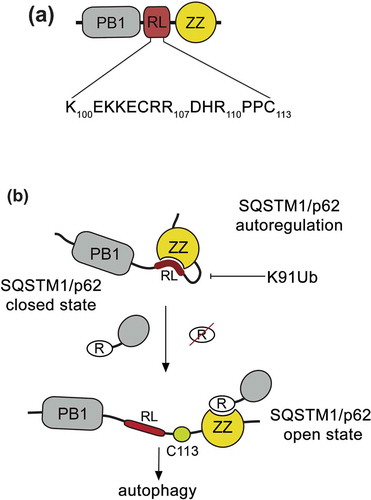Figures & data
Figure 1. ZZ autoregulates SQSTM1/p62 function. (a) Schematic representation of the N-terminal region of SQSTM1/p62 containing the PB1 domain, RL, and the ZZ domain. (b) A model for potential SQSTM1/p62 autoregulation. The ZZ domain binds to the RL region, locking SQSTM1/p62 in a closed state. Upon binding of the ZZ domain to arginylated substrates but not arginine, the autoinhibition is released. Cys113 in RL, which is implicated in the formation of disulfide-linked conjugates, is shown. Future studies will be required to test this idea and to determine whether the SQSTM1/p62ZZ-RL interaction occurs in an intermolecular or intramolecular manner.

